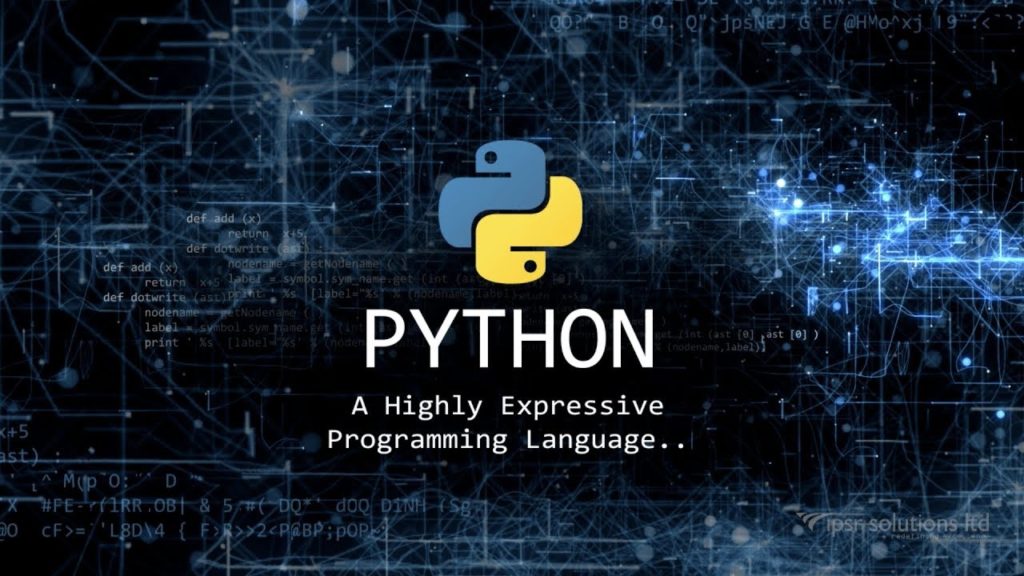Python: The Versatile Programming Language Transforming IT Domains

Python, known for its simplicity and readability, has become one of the most popular programming languages in the IT industry. Its versatility and extensive libraries make it suitable for a wide range of applications, from web development to data science, artificial intelligence, and beyond. Let's explore how Python is revolutionizing various IT domains.
1. Introduction to Python
Python is an interpreted, high-level, general-purpose programming language. Created by Guido van Rossum and first released in 1991, Python's design philosophy emphasizes code readability and simplicity. Its syntax allows developers to express concepts in fewer lines of code, making it an ideal choice for both beginners and experienced programmers.
2. Web Development
Python is widely used in web development, thanks to its robust frameworks and libraries.
2.1 Django
Django is a high-level Python web framework that encourages rapid development and clean, pragmatic design. It includes numerous built-in features, such as an ORM, authentication, and an admin interface, which help developers build secure and scalable web applications quickly.
Key Benefits:
- Rapid development
- Secure and scalable
- Comprehensive documentation
2.2 Flask
Flask is a micro web framework for Python, known for its simplicity and flexibility. Unlike Django, Flask does not come with many built-in features, allowing developers to choose and integrate the tools they need.
Key Benefits:
- Lightweight and flexible
- Easy to learn and use
- Extensible with various libraries
3. Data Science and Machine Learning
Python's extensive libraries and tools make it a favorite in the data science and machine learning communities.
3.1 Pandas
Pandas is a powerful data manipulation and analysis library for Python. It provides data structures like DataFrames, which make it easy to manipulate, analyze, and visualize data.
Key Benefits:
- Easy data manipulation
- Handling of large datasets
- Integration with other libraries
3.2 Scikit-Learn
Scikit-Learn is a widely-used machine learning library for Python. It provides simple and efficient tools for data mining, data analysis, and machine learning.
Key Benefits:
- Comprehensive machine learning algorithms
- Easy to use and integrate
- Extensive documentation
3.3 TensorFlow and PyTorch
TensorFlow and PyTorch are two of the most popular deep learning frameworks. TensorFlow, developed by Google, and PyTorch, developed by Facebook, provide powerful tools for building and training neural networks.
Key Benefits:
- Powerful and flexible
- Large community and support
- Extensive libraries and tools
4. Automation and Scripting
Python is an excellent choice for automation and scripting, enabling developers to automate repetitive tasks and improve productivity.
4.1 Selenium
Selenium is a powerful tool for automating web browsers. It allows developers to write scripts in Python to automate web interactions, testing, and scraping.
Key Benefits:
- Browser automation
- Web testing
- Easy to use
4.2 Ansible
Ansible is an open-source automation tool that simplifies configuration management, application deployment, and task automation. Written in Python, it is known for its simplicity and ease of use.
Key Benefits:
- Simple automation
- Agentless architecture
- Scalable and flexible
5. Scientific Computing
Python is widely used in scientific computing due to its powerful libraries and tools.
5.1 NumPy
NumPy is the fundamental package for scientific computing with Python. It provides support for large multi-dimensional arrays and matrices, along with a collection of mathematical functions to operate on these arrays.
Key Benefits:
- Efficient array computations
- Integration with other scientific libraries
- Extensive mathematical functions
5.2 SciPy
SciPy builds on NumPy and provides additional tools for scientific computing, including modules for optimization, integration, interpolation, eigenvalue problems, and more.
Key Benefits:
- Advanced scientific computations
- Easy to integrate with NumPy
- Extensive functionality
6. Cybersecurity
Python is also used in cybersecurity for developing tools and scripts for security analysis, penetration testing, and network scanning.
6.1 Scapy
Scapy is a powerful Python library used for interactive packet manipulation. It enables users to forge, decode, send, and capture network packets, making it useful for network analysis and penetration testing.
Key Benefits:
- Network packet manipulation
- Easy to use and extend
- Comprehensive network analysis
6.2 Nmap
Nmap, a popular network scanning tool, has a Python library called python-nmap. It allows developers to integrate Nmap’s capabilities into their Python scripts for network discovery and security auditing.
Key Benefits:
- Network scanning and discovery
- Security auditing
- Easy integration with Python
7. Conclusion
Python's simplicity, readability, and extensive libraries make it a versatile and powerful programming language. Its applications span various IT domains, including web development, data science, machine learning, automation, scientific computing, and cybersecurity. As technology continues to evolve, Python's role in driving innovation and efficiency across these domains will only grow.